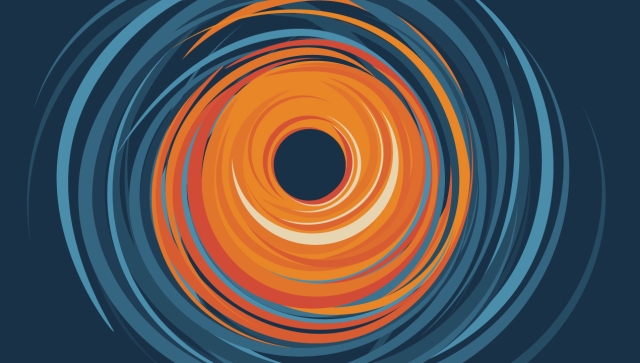
First image of a black hole, Event Horizon Telescope
In 1919, Sir Arthur Eddington observed the first clear evidence for Einstein’s theory of general relativity: the Sun was bending light from distant stars, shifting their apparent location on the sky.
If taken to its extreme, this bending of light by massive objects suggests the existence of an enormously unusual phenomenon: A black hole. These behemoths bend light not just a thousandth of a degree, like Eddington’s stars. Instead, they bend light into an orbit, circling the dark mass just beyond its event horizon. This imparts a silhouette, or shadow, on the emission from the bright surrounding plasma, betraying the existence of gravity’s most extreme manifestation.
Cosmologically speaking, this shadow is tiny, extending a mere hundredth of a millionth of a degree on the sky. It took a century after Eddington’s experiment before humanity was finally able to observe it in 2019. The first black hole ever observed, at the heart of nearby galaxy M87, opened a new window into the nature and impact of gravity.
This extraordinary achievement was made possible by the Event Horizon Telescope (EHT) Collaboration, made up of 13 institutions including Perimeter Institute. The EHT connects high-frequency radio telescopes around the world together, in a process called millimetre-wavelength Very Long Baseline Interferometry (mm-VLBI).
Despite being a venerable method, applying mm-VLBI at the wavelengths and sensitivities required by the EHT meant revising nearly all aspects of radio interferometry. As a result, these first black hole images represent the most systematically produced radio images in the history of the field, and have necessarily resulted in novel calibration, imaging, and analysis methods. The EHT has unquestionably revolutionized high-resolution radio astronomy. The development of astrophysical models and the software to compare them to radio data at Perimeter has led the way in this revolution. Perimeter Associate Faculty Avery Broderick has been a leader in this effort.
Since that historic image in 2019, the EHT revealed the first image of the black hole at the centre of our own galaxy in 2022, as well as follow-up observations of the first black hole, M87*, showing how it evolved over the course of a year. And there is more to come.
The EHT Collaboration (incl. Broderick, Gold, Georgiev, Jeter, Karami, Ni, Preciado-Lopez, Pu, Tiede). ApJL, 875, 1 (2019).;
The EHT Collaboration (incl. Broderick, Gold, Georgiev, Jeter, Karami, Ni, Preciado-Lopez, Pu, Tiede). ApJL, 875, 2 (2019).;
The EHT Collaboration (incl. Broderick, Gold, Georgiev, Jeter, Karami, Ni, Preciado-Lopez, Pu, Tiede). ApJL, 875, 3 (2019).;
The EHT Collaboration (incl. Broderick, Gold, Georgiev, Jeter, Karami, Ni, Preciado-Lopez, Pu, Tiede). ApJL, 875, 4 (2019).;
The EHT Collaboration (incl. Broderick, Gold, Georgiev, Jeter, Karami, Ni, Preciado-Lopez, Pu, Tiede). ApJL, 875, 5 (2019).;
The EHT Collaboration (incl. Broderick, Gold, Georgiev, Jeter, Karami, Ni, Preciado-Lopez, Pu, Tiede). ApJL, 875, 6 (2019).;
“THEMIS: A Parameter Estimation Framework for the Event Horizon Telescope.” Avery E. Broderick et al 2020 ApJ 897 139.

Violations of cosmic censorship
Einstein's theory of gravity predicts that, as a massive object collapses, it eventually warps spacetime so severely that the theory itself breaks down, forming a singularity. Remarkably, however, it seems that the places where this happens are hidden from sight to any observer lucky enough to avoid falling into a black hole, blocked by an event horizon. This principle of "cosmic censorship" was first conjectured by Nobel laureate Roger Penrose in 1969. It has been the subject of intense efforts to prove or invalidate ever since.
The first ever generic violation of comic censorship was found by Luis Lehner, who holds the Carlo Fidani Rainer Weiss Chair in Theoretical Physics at Perimeter, in collaboration with Distinguished Visiting Research Chair Frans Pretorius. They made the discovery by studying the dynamics of a black string (a higher-dimensional analog of a black hole) in five-dimensional spacetime. They found that the unstable string eventually pinched off to form a naked singularity (a singularity not hidden behind an event horizon), signalling that a new theory – such as quantum gravity – must govern the subsequent dynamics.
This discovery implies that, if the cosmic censorship conjecture holds true in our universe, then it must be a special property of our four-dimensional spacetime.
In recent work, faculty member William East resolved a longstanding claim that cosmic censorship could be violated in four-dimensional spacetimes through a scenario involving the collapse of very elongated distributions of particles. He showed that such objects do in fact form black holes, "censoring" the final stages of collapse, and rescuing the conjecture in this scenario. The cosmic censorship conjecture thus remains a valid, though not mathematically proven, principle of our universe.
“Black Strings, Low Viscosity Fluids, and Violation of Cosmic Censorship,” Luis Lehner and Frans Pretorius Phys. Rev. Lett. 105, 101102 (2010).;
“Cosmic censorship upheld in spheroidal collapse of collisionless matter,” William E. East Phys. Rev. Lett. 122, 231103 (2019).
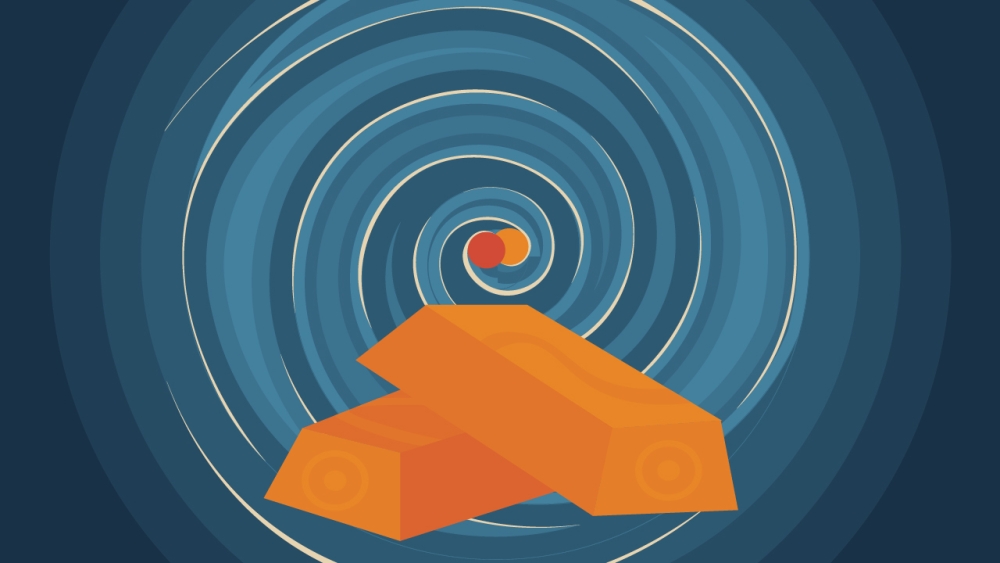
Where does gold come from? The origins of r-process elements
Roughly 150 years after the establishment of the periodic table, the cosmic origin of a large fraction of the elements remains a fundamental, open question. This includes roughly half of all elements heavier than iron, including gold, silver, platinum, and uranium. 60 years ago, researchers discovered that these elements need to be synthesized by rapid capture of neutrons onto lighter ‘seed’ nuclei. The astrophysical sites that could create the extreme conditions for such ‘r-process’ nucleosynthesis, however, remained largely elusive. What has long been thought to provide such neutron-rich environments – regular core-collapse supernovas – are now disfavored both by observations and theory.
Gravitational wave detectors like Advanced LIGO and Virgo have made transformative progress on the origin of r-process elements. The ultraviolet, optical, and near-infrared emission following the first ever detected merger of two neutron stars (GW170817) was consistent with a kilonova: a thermal emission powered by the decay of radioactive nuclei created by the r-process.
Pioneering numerical simulations by Perimeter researchers Daniel Siegel and Brian Metzger revealed the most likely origin of this kilonova and the heavy elements it created: powerful outflows from an accretion disk that formed around the remnant black hole.
Whether neutron star mergers like this one are the dominant contributor to heavy element formation in the Universe remains an open question, given various factors related to chemical evolution and spectroscopic r-process abundance observations in stellar spectra across various environments of our Milky Way.
Further numerical simulations by Siegel and Metzger in 2019 showed that an additional promising r-process contender exists: the collapse of rapidly rotating massive stars. Dubbed “collapsars,” they form the central engines of long-duration gamma-ray bursts. In contrast to neutron star mergers, collapsars follow star formation with negligible delay, and enrich material without spatial dislocation in the star-forming region that gave rise to the massive progenitor star. This appears to solve several issues with chemical evolution at once, and is consistent with the dominant source of r-process elements in the universe. Signatures of r-process nucleosynthesis in collapsars (a kilonova in a supernova) might soon be observable in nearby collapsar events with sensitive optical and near-infrared telescopes.
“Three-Dimensional General-Relativistic Magnetohydrodynamic Simulations of Remnant Accretion Disks from Neutron Star Mergers: Outflows and 𝑟-Process Nucleosynthesis.” Daniel M. Siegel and Brian D. Metzger.; Phys. Rev. Lett. 119, 231102.;
“Collapsars as a major source of r-process elements.” Daniel M. Siegel, Jennifer Barnes & Brian D. Metzger. Nature volume 569, pages241-244 (2019).
More Turning Points:
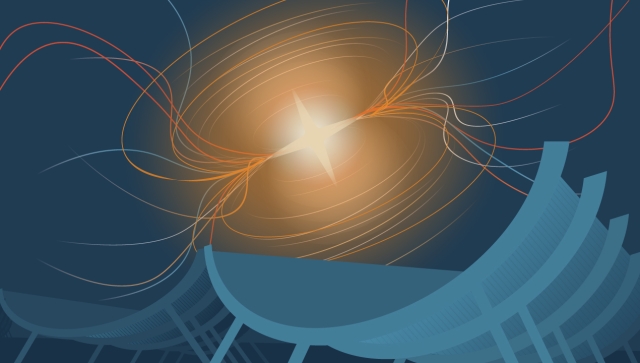
Cosmology

Mathematical Physics
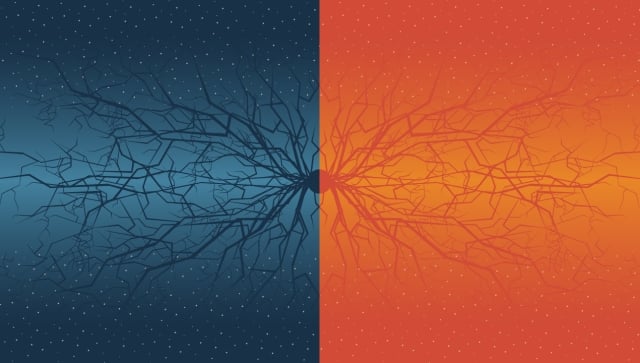
Particle Physics

Quantum Foundations
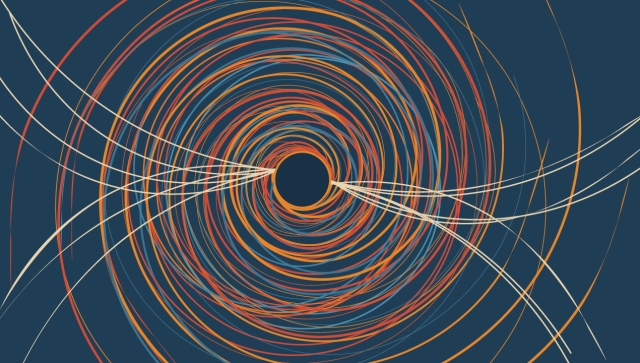
Quantum Fields and Strings

Quantum Gravity
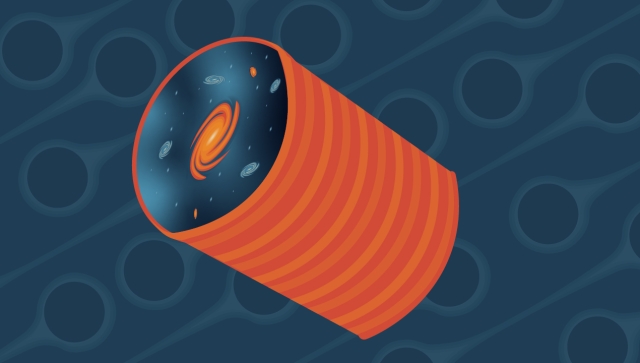
Quantum Information

Quantum Matter
